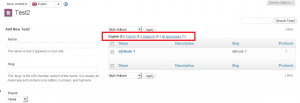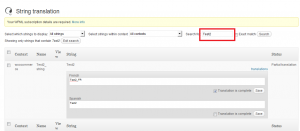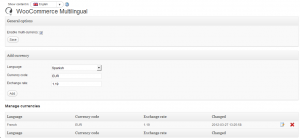We’ve added a ton of new functionality to WooCommerce multilingual and we’d like you to take it for a spin. It’s in Beta, but has passed our extensive QA, so you might be able to use this in production sites, after carefully checking.
New features in this release are:
- Multiple-currencies – now, you can enable more than one currency in WooCommerce and have a different price (in a different currency), for each language.
- Synchronization of product variations – variations are always a complex thing, but this release makes it much simpler. When you edit variations in the default language, the same variations become available in the translations.
- Fully translatable attributes – standard and custom product properties are now fully translatable, via WPML’s String Translation module.
Besides these additions, we’ve also included tons of bug fixes, that help your multilingual store run smooth.
When you use WooCommerce multilingual, remember to also enable WPML (core), WPML String Translation and WPML Translation Management to enjoy all the new features on this release.
Want to test out WooCommerce Multilingual 1.1b?
You’ll need to download:
- WooCommerce 1.5 – you need this development version, which includes stuff that isn’t yet available in the official release
- WooCommerce Multilingual 1.1b2
- The recent WPML version (from your WPML account)
Translating attributes
Go to Products -> Attributes -> Configure terms. At the top of the page you’ll see the available languages.

To do the actual translation, go to WPML -> String Translation and search for the name of the attribute group. They all are under the ‘woocommerce’ textdomain.

Adding currencies
Go to WPML -> WooCommerce Multilingual, click on the ‘Enable multi-currency’ checkbox and the ‘save’ button. Then select the language you want, enter the currency symbol and the exchange rate (the default currency to the current). Click on the ‘Add’ button.
Note: By default WooCommerce currency is set to ‘Pounds sterling’, you can change it in the WooCommerce -> Settings page.

There’s a complete WooCommerce Multilingual Users Guide which you should read when you get started.
Let us know
We’d love to hear how this is working for you. Leave comments here to tell us, or show us your multilingual e-commerce sites. If you need technical help, the best place is in our forum.
